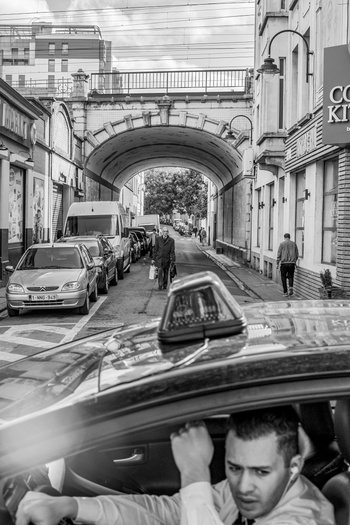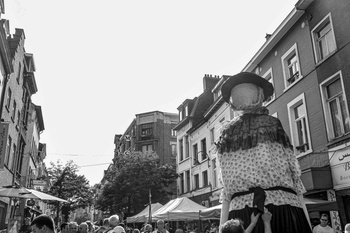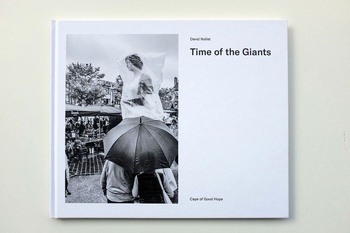Brussels-based photographer David Nollet spent five years following processions of giants in the brittle, cluttered country called Belgium. The photos have now been brought together in Time of the Giants, a book that pays tribute to the magic of folklore.
© David Nollet
| A procession of giants in the Marolles.
“A tale that becomes folklore is one that is passed down and whispered around. Sometimes even sung about,” Taylor Swift writes on her Instagram about her lockdown album Folklore. The pop princess who sells out stadiums has made an album of bedroom pop music that harks back to old traditions and proves that folklore is not dying out. On the contrary, these corona times have breathed new life into old habits.
Time of the Giants by David Nollet is not a lockdown project but it is immersed in the same deep reverence for heritage and tradition. “The giants are representatives of ancient popular wisdom,” David Nollet says. “The processions are more poetic and experiencing them touches you far more deeply than carnival, for example, a festival that has become far more commercialized. The procession of giants is real folklore.”

© David Nollet
For five years (from 2014 to 2019), Nollet followed the processions everywhere from big cities to tiny villages and on both sides of the language border. From Aalst and the Brussels Marolles to Langemark-Poelkapelle and Wodecq. “You also see giants in Spain and Portugal, but the processions with big puppets is a typically Belgian tradition. The processions are conducted in precisely the same way in Brussels, Flanders, and Wallonia. As soon as the band begins to play and the giants start dancing, a sense of unity washes over the community. It is simply magical.”
Giants have been carried in procession since the fifteenth century, often depicting religious figures. One famous example is Goliath, the giant who was slain by David. Saint Christopher was also quite a popular figure. This custom evolved over the centuries; the Catholic Church gradually lost its power over the processions, and the giants became profane symbols. Some giants were linked to a guild or depicted a local legend or popular figure. In the Marolles, Jacques Brel was given this honour, for example.

© David Nollet
CONNECTION
“Time of the Giants was not intended to be an encyclopaedic work about the giants. The focus is on the sense of connection and solidarity. That is why there are more photos of the participants than the giants themselves. I was inspired to make this book back in 2004, at the Kunstenfestivaldesarts. The video installation Looking at Ta'ziyè (The Spectators) by the Iranian director Abbas Kiarostami made a big impression on me. He filmed onlookers taking part in a procession to commemorate the death of the son of Ali, a warrior imam. You can see the sense of involvement and connection on the people's faces. That is what I have tried to show here too.”
Over the past year, Nollet went back to all the towns and villages where he photographed giant processions. “The contrast between everyday life and the festive procession offers an insight into the community of giant-bearers. These photos of cobbled streets and little labourers' cottages are not nostalgic. That is just what small villages look like.”
Life goes on in the Marolles too. A taxi driver picks up a customer, at the laundrette the machines are all running at full speed. And we wait for the band to play, the procession to parade past, and the giants to dance.

TIME OF THE GIANTS
David Nollet, Cape of Good Hope, www.cape.ag
With a text by the journalist Pascal Verbeken
Read more about: Expo
Fijn dat je wil reageren. Wie reageert, gaat akkoord met onze huisregels. Hoe reageren via Disqus? Een woordje uitleg.